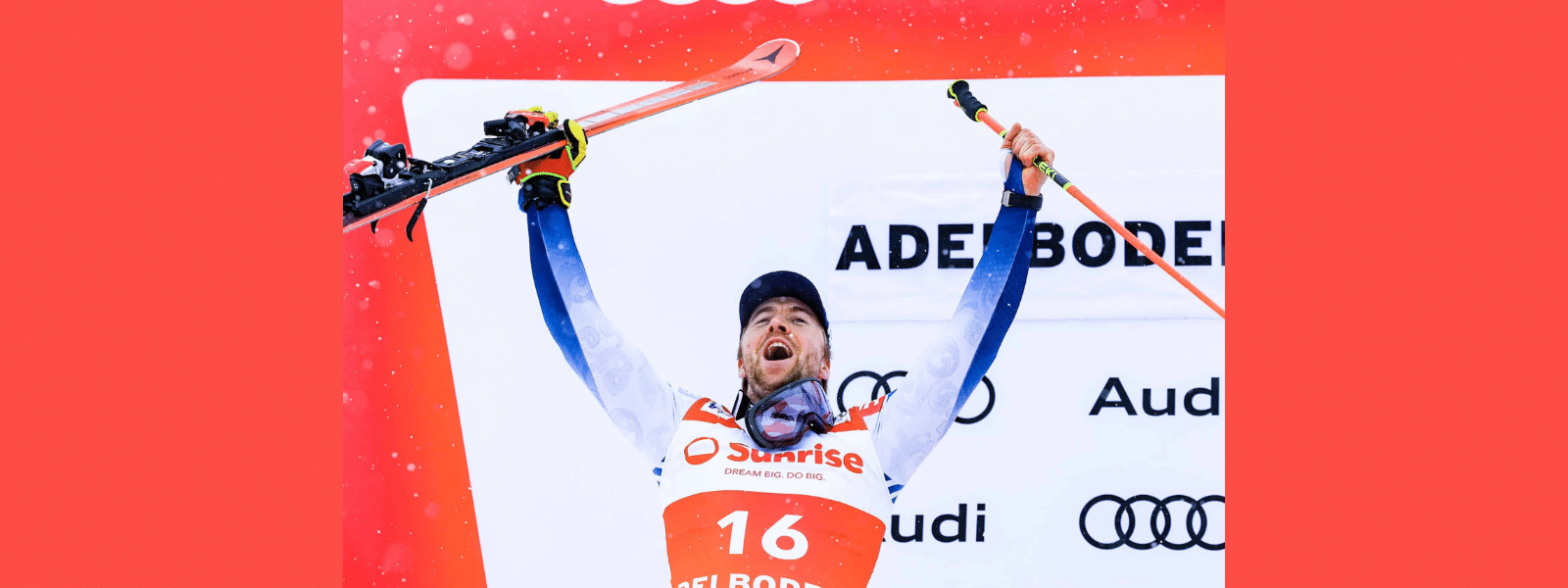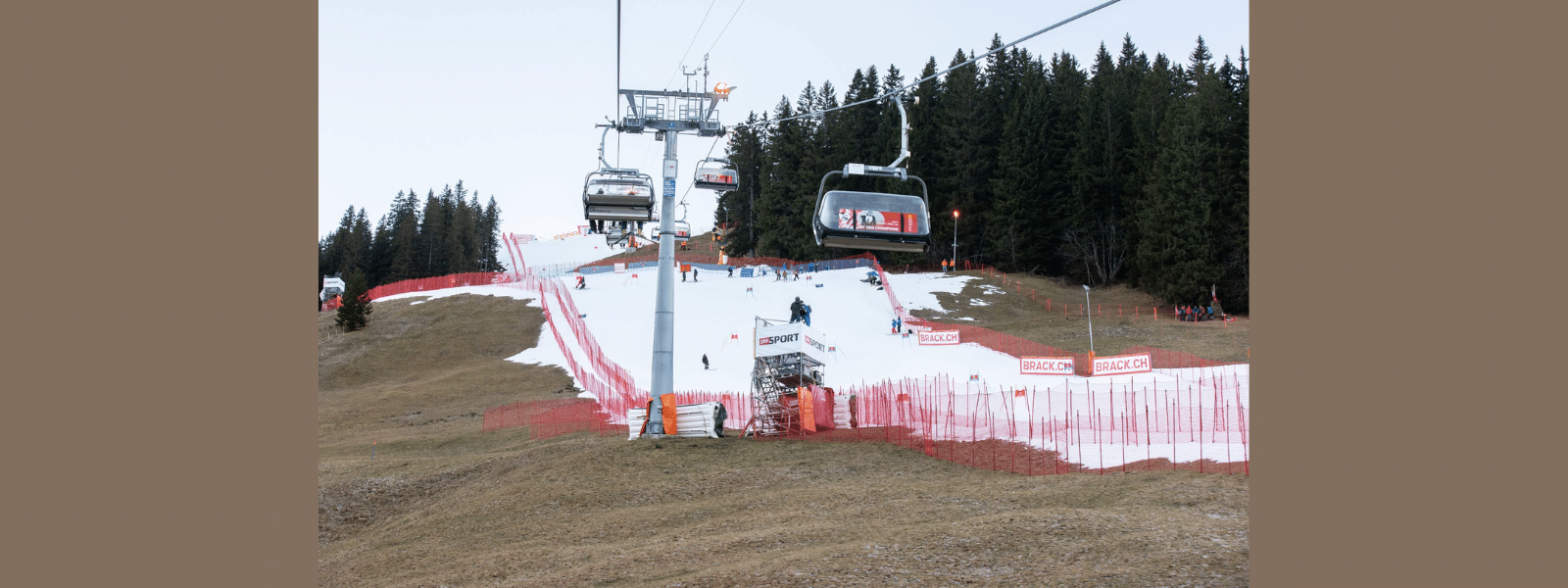Are you prepared to Stop the Bleed?
Jan. 24, 2020. — Stowe, Vt.: At the UVM carnival, it was the usual scene. Parents packed crockpots and team picnics into the clubhouse then trudged up to the finish to watch the racers sending it down Main Street. Among them was Shelley Davis, who was there to watch her daughter Maddie, who races for Boston College. Davis is well known among the college coaches and athletes, most of whom she has personally trained in Stop the Bleed emergency treatment. Bleeding is the No. 1 cause of preventable death. Full stop. Originally a response to mass shootings, Stop the Bleed has been embraced by the ski world, where severe cuts from razor-sharp edges have become all too familiar.

After both of her children suffered such injuries, from which her son Jonathan nearly lost his life, Davis made it her mission to provide Stop the Bleed training and lifesaving equipment to coaches and athletes, who are the likely first responders in such a situation requiring quick action. By partnering with the Kelly Brush Foundation, Davis’ efforts have trained over 1000 coaches, athletes and officials, and provided 2100 kits to club across the US and Canada. USSS has included the 1-hour training in all their regional meetings, while Davis herself has organized instruction at conventions, in lodges, in schools — wherever the ski racing community gathers. This day in Stowe would show how much her work has done, and what still needs to happen to keep racers safe.
Preparation is everything
Things run smoothly when the well-oiled Mount Mansfield Ski Club machine runs races at Stowe, and the GS on Day 1 of the carnival was no exception…until Racer 27. UNH racer Jordan Phillips lost a ski in the middle of a compression, and took what looked like an innocent fall. Kate Anderson, who coaches for Proctor’s gap year program was slipping the course at the time, and was on her way to retrieve his ski from the fence when she heard Phillips yelling “Blood!” Anderson, who had been trained by Davis the previous year, sped to him. She keeps a Stop the Bleed kit in her backpack, but because her pack is not always with her, she also carries a tourniquet and first aid supplies in a hip pack on her person at all times.

Upon glimpsing the severity of Phillips’ boot-top wound, Anderson told him to lie still, instructed a gatekeeper to retrieve her kit, and, having never done it before, secured the tourniquet below his knee within 30 seconds. “In the moment it felt right,” recalls Anderson. “I never thought ‘I can’t do this.’” By then a coach had arrived with another kit and they wrapped the wound, containing his exposed calf muscle. By the time ski patrol arrived and Phillips was in the sled, he was in pain, but able to give a thumbs up to concerned coaches along the course, and parents in the finish, including Davis.
Shelley Davis was a ball of emotions. On one hand she was relieved that Jordan was going to be ok (he had surgery that afternoon and is recovering well), and pleased to see the preparedness at Stowe. Stop the Bleed stations were announced the night before in the Team Captains meeting, and when the accident occurred virtually every coach was armed with a kit or their own supplies, and the training to use them.
On the other hand, it brought back the reality of this danger, and the urgency to spread the message. Sure, a high-level FIS race is lined with trained coaches who have kits in their packs and tourniquets in their pockets, but what if this happens in everyday training? Cuts can happen to anyone, at any speed in any terrain.
When you least expect it
Dec. 30, 2019 — Whiteface, N.Y.: Wyatt Wardlaw and his U-14 teammates were warming up for a training day at Whiteface Mountain. While the upper mountain was on wind hold, they were doing skate relay races on the flats. He and a teammate got hung up, and one of their edges hit Wyatt’s leg and dragged through his clothing. In a moment, the ski had cut the posterior tibial artery, severed three nerves and penetrated 5mm into his fibula, a type of injury that could have bled out in minutes.
As freakish as the accident was, so too was the swiftness of the response. When the kids around Wyatt called out, their coach, Jimbo Johnston, snapped into action. He had a tourniquet and coagulating gauze in his pocket, and applied them both within 90 seconds of the accident. Weekend coach Patrick Larkin, who is a Physician’s Assistant in pediatric surgery, heard kids screaming and ran up the hill to help Johnston. Larkin helped him manually compress Wyatt’s artery, while supplies from a nearby Stop the Bleed kit were used to wrap the wound. Larkin stayed with Wyatt when he was in the ski patrol sled and into the ambulance, comforting and stabilizing him on the trip to Adirondack Medical Center. Larkin urges anyone in that situation to be clear and direct about the need for help. ” Notification has to be immediate and forthcoming,” he says. “You need to recognize and act. And you need all hands.”
Wyatt’s father, Tait Wardlaw, has a lifetime of ski industry experience, as a former product manager, marketing VP at Rossignol, heli-ski operator and ski racer. He realizes this is a trend on the rise, but never imagined it happening to his kid. As Wyatt bravely faces the road ahead, which involves the slow process of nerve regeneration, Tait is enormously grateful that Wyatt’s coaches had both the training and the supplies to respond with urgency. “One of the things that’s different about this injury is that it is relatively low in frequency but high in consequence,” says Wardlaw, who, along with Wyatt, is now intent on helping make a dent in this hazard. One of the contributing factors, even for young ski racers, is the near ubiquitous use of electric edge sharpeners that allow anyone to make edges razor-sharp. “Sharpeners are not going away,” says Wardlaw, who notes that electric sharpeners often leave a small burr, or “rail”, on the edge, making it act like a serrated knife. “There needs to be more training about how to finish the edges from hand-held sharpeners.” Wardlaw suggests that one pass along the base with a fine red gummy stone, and moderate pressure, not only makes the edge smoother and faster but also makes it last longer.
Dress for success
A day or two after Wyatt’s accident, Wardlaw got a call from Victor Wiacek, a 21-year-old student at Babson College. One year ago, on February 4, 2019, Wiacek sustained a cut to his femoral artery while racing at West Mountain. He was saved by quick-thinking Castleton College students who used a windbreaker as a tourniquet until a coach, Bruce Diamond, arrived with a Stop the Bleed kit. He lost so much blood that he needed a transfusion on the way to the hospital where he had surgery. Wiacek, too, is intent on solving this problem, but by preventing the cuts from happening in the first place.
To this end, Wiacek literally sweated out last summer in his Dad’s Brooklyn garage. Despite spending two months in a wheelchair, and still missing chunks of leg muscle, he can’t imagine a winter without skis on his feet, and without ski racing. And yet, he wasn’t confident in the testing standards for cut resistant clothing, so he built his own machine. “It felt like a good way to study business and engineering,” says Wiacek, who ordered up and tested 150 samples of cut resistant fabrics. Three passed his test and from those, he developed an American made fabric to construct his own cut-resistant long johns. “That gave me the confidence to get back skiing,” which he did at Christmas. He’s already racing again, wearing his own “vixprotection” long johns, which attain a Level 5 (the highest designation) under the current established standards.
Wiacek, who immersed himself not only in the seven different mechanisms of action in cut-resistant material but also in starting a business, strongly believes cut resistant clothing needs to develop more effective testing standards. While his own long johns give him the peace of mind he needs, he is quick to push for better solutions and hopes his work can be the first step. “I do not want people to rely just on me to get the product out,” says Wiacek, who stresses that any protection is better than no protection. “I’m just a kid who made this thing in my garage. If something better comes around, great. I’d love to have this off my shoulders.” Nonetheless, he hopes to start fulfilling the waiting list at vixprotection.com in a few weeks.
Ski specific cut-resistant layers—available now from POC, Base 360, and soon from SYNC and Under Armour—continue to evolve and improve, balancing function with fit and feel. Most utilize panels of cut-resistant material that are positioned over arteries and vulnerable areas, and some offer shorts versions. Larkin is adamant that whatever standards emerge, the protection must extend into the boot, and stay there. Many cuts happen to the hamstring, but these recent injuries show they can happen on or below the knee as well, and also on the arms.
How to stop the bleed
The takeaway — advice from the field:
- Wear the best cut resistant layers you can, that cover arteries, including the leg below the boot top.
- Get the training! All coaches and athletes, ideally from U-14 up, and their parents, should get the training.
- Get the kits! Take the time to unwrap the tourniquet and be familiar with the supplies
- Have the kits visible and available. Make Stop the Bleed stations visible and accessible at the top of training venues
- Have the kits or the basics (tourniquet and gauze) on coaches at all times on the hill
- Communicate loudly and urgently that there is a bleed and you need help. This goes for responders, onlookers and victims themselves. You need all hands on deck.
- Act! There is no time to evaluate.
- If you use an electric sharpener, learn how to finish the edge. It’s safer, longer-lasting and faster!
- Know that properly applied tourniquets will be painful.
- Don’t let your guard down. Many of these accidents happen at low speed and on moderate or even flat terrain.
For more info and to request kits and training email stopthebleed@kellybrushfoundation.org





















